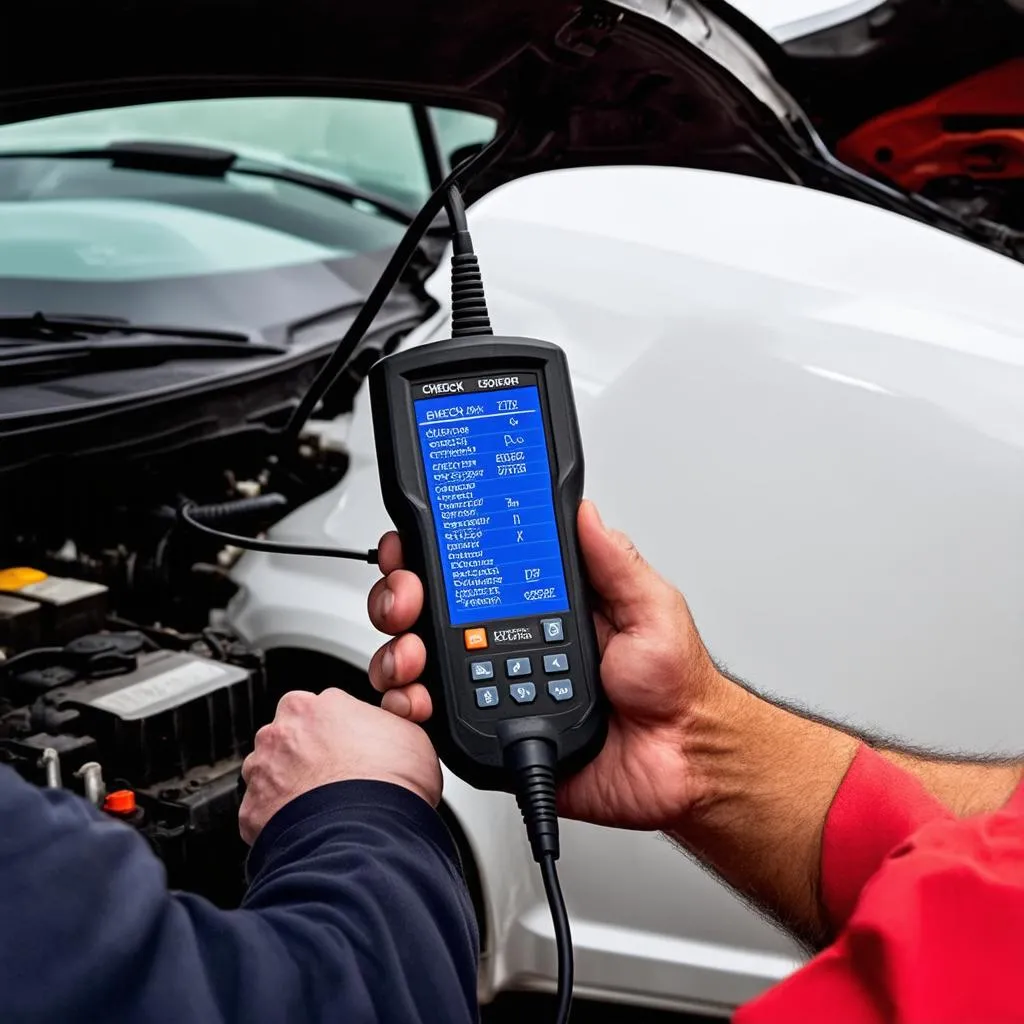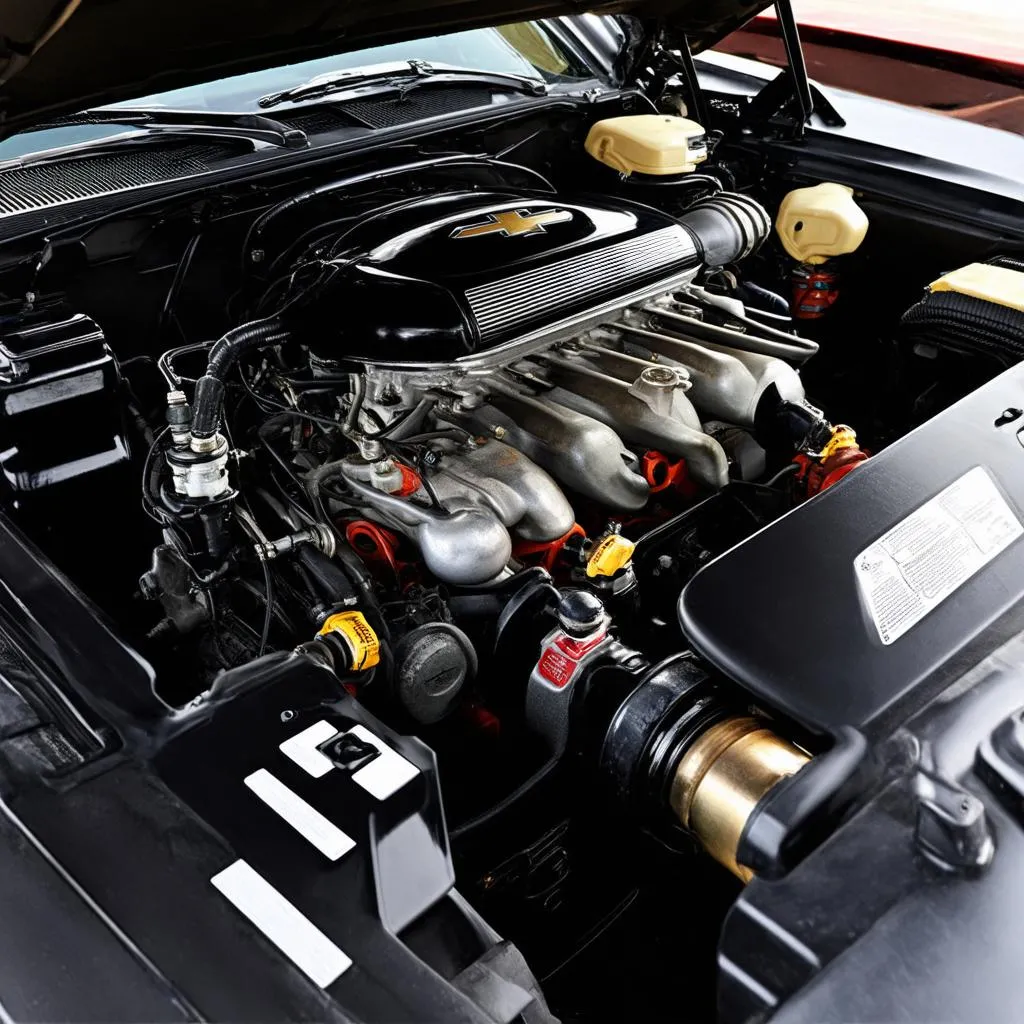“My check engine light is on again!” Sounds familiar? It’s the dreaded phrase uttered by countless Chevy owners. Before you panic, remember those glowing lights aren’t cryptic curses, but rather your car’s way of saying, “Hey, something’s up!” This “something” is often communicated through Chevy Obd Trouble Codes, and understanding them can save you time, money, and a whole lot of stress.
What are Chevy Obd Trouble Codes, Anyway?
Imagine your Chevy has a secret language – that’s essentially what OBD (On-Board Diagnostics) codes are! They’re standardized codes that illuminate your check engine light, providing clues about potential issues within your car’s engine, transmission, emissions system, and more.
Think of your car as a well-oiled machine with various sensors constantly monitoring its performance. When a sensor detects something outside the normal range, it triggers a specific code, stored within your vehicle’s computer.
“Knowledge is power,” as the saying goes, and knowing how to interpret these codes can be incredibly empowering.
Why Should You Care About Chevy OBD Codes?
Let’s face it, car repairs can be expensive. Understanding OBD codes can be your secret weapon against unnecessary trips to the mechanic and hefty repair bills. Here’s why:
- Early Detection: Codes often appear before you even notice a difference in your car’s performance, allowing you to address issues proactively.
- Targeted Repairs: Knowing the specific code helps pinpoint the problem area, preventing unnecessary guesswork and potentially costly repairs.
- Peace of Mind: Armed with knowledge, you can communicate more effectively with your mechanic and feel confident about the repairs being done.
Unveiling the Mystery: How to Read Chevy OBD Codes
Chevy OBD codes follow a standardized format:
- A letter and four digits: For instance, P0302.
- The letter indicates the system affected:
- P: Powertrain (engine, transmission, etc.)
- B: Body (airbags, power seats, etc.)
- C: Chassis (ABS, traction control, etc.)
- U: Network & Communication (modules, wiring, etc.)
- The letter indicates the system affected:
- The digits further specify the issue:
- The first digit often indicates a general area (e.g., fuel system, ignition system).
- The remaining digits pinpoint the specific problem component or circuit.
Let’s take our example, P0302: This code indicates a problem with the powertrain (P), specifically a misfire detected in cylinder number 2 (0302).
 Chevy OBD Scanner
Chevy OBD Scanner
Common Chevy OBD Codes and What They Mean:
While countless codes exist, some appear more frequently than others. Here’s a glimpse into a few common ones:
- P0420: Catalyst System Efficiency Below Threshold (Bank 1): This code suggests a problem with your catalytic converter, potentially requiring replacement.
- P0171: System Too Lean (Bank 1): This indicates your engine is receiving too much air compared to fuel, possibly due to a vacuum leak or faulty oxygen sensor.
- P0300: Random/Multiple Cylinder Misfire Detected: This code points to engine misfires, which could stem from various issues, including spark plugs, ignition coils, or fuel injectors.
- P0135: O2 Sensor Heater Circuit Malfunction (Bank 1, Sensor 1): This signals an issue with the oxygen sensor’s heater circuit, hindering its ability to function correctly.
Remember, this is not an exhaustive list. For detailed information about specific codes, refer to your vehicle’s service manual or consult a qualified mechanic.
Beyond Codes: The Human Touch in Car Repair
While OBD codes offer invaluable diagnostic information, remember they’re just one piece of the puzzle. Other factors, such as your car’s age, mileage, driving conditions, and maintenance history, play a significant role in accurate diagnosis and repair.
Some believe that mechanical issues can sometimes be a manifestation of imbalanced energy within the car or its owner. While this might seem far-fetched to some, it emphasizes the interconnectedness between humans and their machines.
Whether you subscribe to this belief or not, maintaining a positive connection with your car, through regular maintenance and mindful driving, can contribute to its longevity and overall well-being.
 Chevy Engine
Chevy Engine
Need Help Deciphering Your Chevy’s Language?
Understanding your Chevy’s OBD codes can feel like cracking a secret code. But with the right knowledge and resources, you can navigate car troubles with confidence.
Looking for more in-depth information about specific Chevy models or have questions about other OBD codes? Check out these resources:
- 2009 Chevy Traverse OBD P0302 Code
- 2015 E-350 OBD II
- Chevy OBD Error 1403
- 2004 Chevy Impala OBD Location
- Chevy Bolt Instant Power OBD
Still, feel stuck? Don’t hesitate to reach out to our team of automotive experts via WhatsApp at +84767531508. We’re here to assist you 24/7 with all your diagnostic tool and car repair needs!
Drive with Confidence, Armed with Knowledge
Remember, your Chevy’s check engine light is a messenger, not a monster. By understanding its language through OBD codes, you empower yourself to take control of your car’s health and keep it running smoothly for miles to come.
What are your experiences with Chevy OBD codes? Share your stories and questions in the comments below – let’s learn from each other!